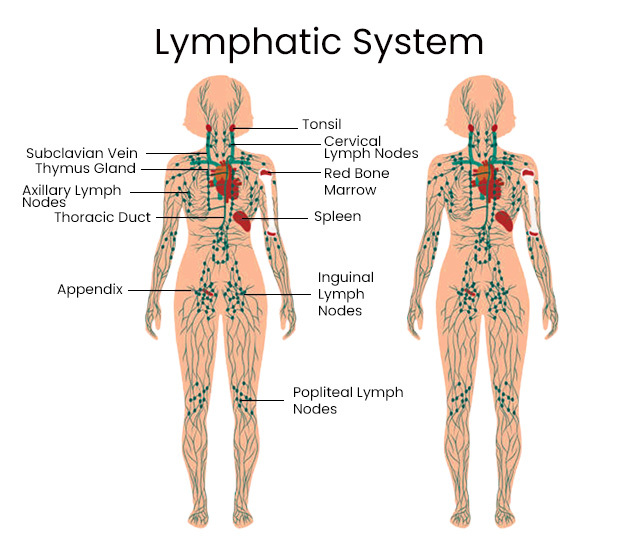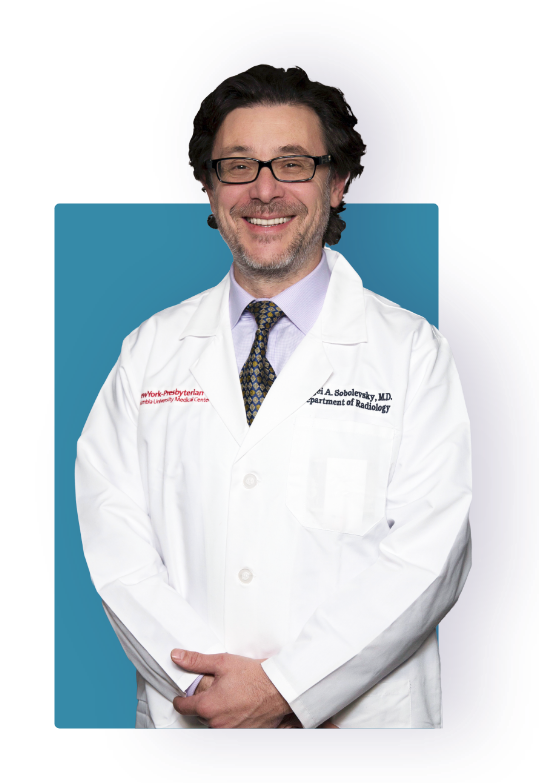If you have been diagnosed with lymphedema, chronic venous insufficiency, or suffer from circulation problems and related symptoms, a lymphatic drainage massage is the best way to address your health issues. It is a gentle routine that targets areas of your body to help lymphatic fluids, or lymph, flow more easily. At Downtown Vein & Vascular Center, Dr. Sergei A. Sobolevsky offers decongestive lymphatic therapy and other vein disease treatments to manage your symptoms successfully. He focuses on the health conditions you are facing and customizes sessions to expedite your healing. He comes up with treatment options to promote general relaxation and skin detoxification, including reducing swelling and pain to help you feel better within no time.
Understanding the Lymphatic System
The lymphatic system works as the cleaning service of the body. It consists of vessels, nodes, and organs that are located throughout the body. These vessels, nodes, and organs work together to facilitate the proper flow of lymph, remove waste products from it and direct the waste products to the organs responsible for flushing them out of the body.
The largest nodes are located in the neck, groin, and armpits and make sure that clean lymph is transported back to the veins that carry blood toward the heart. If the lymphatic system does not work right, lymphatic fluid and toxins can build up in your tissues, putting your body at risk of developing certain diseases. Infection, skin damage, and wounds can worsen by lymph buildup.

Signs You Need Lymphatic Drainage Massage
These conditions may seem harmless, but if you keep experiencing them for some time or many of them one by one, it could be a sign that your body is suffering from toxin overload and you need a lymphatic drainage massage.
The signs include:
- Allergies or food sensitivities
- Bloating
- Brain fog
- Chronic lethargy or feelings or feeling tired all the time
- Constipation
- Depression
- Digestive problems
- Swollen lymph nodes
- Excess weight
- Sinus infections
- Skin problems such as dry or itchy skin
- Swelling in the fingers, often observed when rings fit more tightly
What Is Lymphatic Draining Massage?
Lymphatic drainage massage, also known as manual lymphatic drainage, is a technique or a specialized type of medical massage to relieve blockage from the lymphatic system. It involves the use of long, gentle, and rhythmic strokes to encourage drainage of lymph nodes and movement of lymph fluids around the body.
This massage restores the lymphatic system’s optimal functioning by gently manipulating specific areas of your body. It ensures a smooth flow of lymph fluid to protect the body from harmful agents like bacteria and toxins.
Conditions That Benefit From Lymphatic Drainage Massage
Several studies indicate that lymphatic drainage massage is beneficial for treating several health problems. Some of these health problems include:
Lymphedema
Lymphedema is a chronic, debilitating condition characterized by an abnormal buildup of fluid in the soft tissues due to a blockage in the lymphatic system. The lymph system is a network of lymph vessels, tissues, and organs that carry lymph throughout the body. Lymphedema occurs when lymph does not flow through the body as it should.
Symptoms of lymphedema include pain, skin discoloration, tissue swelling or swelling in the legs, heaviness in the limbs, weakness, hardening or thickening of the skin, and recurring infections. Genetic disorders, injury, infection, cancer treatment, or surgery are risk factors for lymphedema.
Specialists use decongestive lymph therapy, a combination of lymphatic drainage massage and compression bandaging, for the long-term and successful management of lymphedema.
Chronic Venous Insufficiency
Chronic venous insufficiency (CVI) occurs when the leg veins become damaged and fail to pump the blood from the legs back up to the heart. Normally, the valves in the veins make sure the blood flows toward the heart. However, when the valves do not work right, and the blood does not flow upward effectively, it begins to blood in the legs, which results in pain, swelling, and skin discoloration in the lower legs.
Lymphatic drainage massage is used as an adjunctive treatment method for CVI, and it has shown effective results. It can increase the speed of blood flow in people with venous disorders. It helps the body maintain proper circulation, body fluid balance, and immune functions that prevent venous disorders.
Discover other treatments our top vein doctors offer:
Fibromyalgia
Lymph drainage massage can help people suffering from fibromyalgia, a condition that causes inflammation of the skin nerves, discoloration of the skin, and tissue swelling. Massage has proved beneficial for treating depression and stiffness and improving the quality of life for those living with fibromyalgia.
Rheumatoid Arthritis
People suffering from rheumatoid arthritis experience poor lymph flow as the disease progress. As the tissue swells, pain in the joint increases, joints lose their function, and the skin changes its color.
Lymph-draining massage can ease these advanced-stage rheumatoid arthritis symptoms by easing pain and movement.
Read more: 4 Things You Must Know Before Accepting a Lipedema Treatment
Some Other Benefits of Lymphatic Drainage Massage
The lymphatic system plays a vital role in the body’s immune defenses. The lymphatic fluid flows through lymph vessels, which connect lymph nodes. As it passes through the lymph nodes, white blood cells trap and destroy harmful particles, such as bacteria.
Lymphatic drainage massage also helps to:
- Reduce swelling
- Relieve pain
- Alleviate discomfort and stiffness from other medical conditions
- Decreases puffiness
- Enhancing skin tone
- Improves circulation
- Reduces fat
Lymphatic drainage is a gentle technique that supports the entire lymph system, affecting and improving mental and physical health.
Read more: What Causes Hemosiderin Staining?
What Happens During a Lymphatic Drainage Massage?
Lymphatic drainage massage has become a popular form of massage due to its potential health benefits. But it is necessary to consult your doctor before you head for a massage to make sure this is the right therapy for you and helps you achieve desired results. Receiving treatment from an experienced and trained professional is crucial to reducing the buildup of fluid and increasing circulation.
The therapist focuses on compressing or pumping different areas within your legs to help eject fluid buildup faster than usual through your vessels. They do this by using their palms, thumbs, forearms, or elbows. The pressure they use with the massage is measured in compression per minute (CPM).
The MLD therapists follow a particular sequence, using a series of massage techniques, including stretching, compressing, gliding, and cupping motions. Light rhythmic movements stimulate the lymphatic system without pressing hard on the vessel. They make the lymph fluid move easily through the nodes and tissues, ensuring the fluid does not get trapped anywhere.
If you are noticing symptoms of lymphedema, chronic venous insufficiency or fibromyalgia, or any other signs of toxin overload, you may benefit from a lymphatic draining massage. Visit Downtown Vein & Vascular Center to find out more about this form of massage and how it reduces swelling and improves circulation. Doctor Sergei A. Sobolevsky is an experienced endovascular specialist and understands how crucial an effectively functioning lymphatic system is for overall health and well-being. He comes up with the most effective solutions to relieve painful swelling and discoloration in your legs and combines lymphatic drainage massage techniques to retain fluid balance, blood circulation, and immune function throughout the body.

Sergei Sobolevsky, MD, is a leading specialist in endovascular medicine with experience in vascular and interventional radiology. Dr. Sobolevsky has decades of experience in the field, with over 25,000 procedures performed, accumulating extensive experience in image-guided minimally invasive medicine, diagnosing and treating a range of conditions.
Dr. Sobolevsky earned his Doctor of Medicine (MD) degree in 1997 from the University of Colorado School of Medicine. He received his specialty clinical training in vascular and interventional radiology at Harvard University. Later, he earned his MBA from the MIT Sloan School of Management. Recognized as a Castle Connolly Top Doctor and named to the Top Doctors New York Metro Area in 2020, 2021, and 2022, Dr. Sobolevsky is licensed in multiple states, has delivered presentations at numerous institutions in the US and abroad, and now acts as a clinical advisor for the biomedical industry. He also held multiple positions in the field during his career, including Chief of Vascular and Interventional Radiology at the Columbia University Medical Center in New York, NY, Senior Vice President in Clinical and Regulatory Affairs at Artann Laboratories in North Brunswick, NJ, and Medical Director at the American Endovascular and Amputation Prevention Center in Brooklyn.
More About Dr. Sobolevsky

